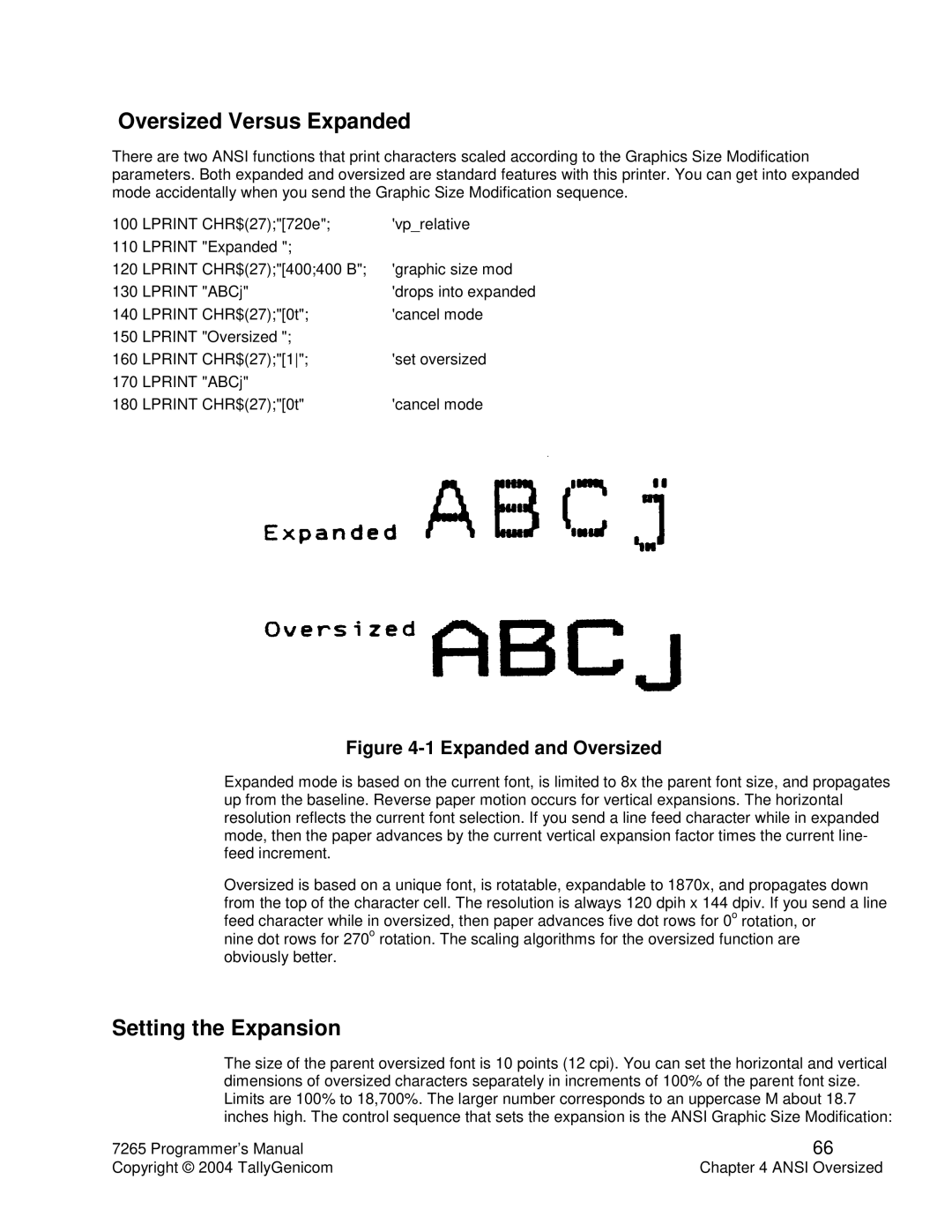
Oversized Versus Expanded
There are two ANSI functions that print characters scaled according to the Graphics Size Modification parameters. Both expanded and oversized are standard features with this printer. You can get into expanded mode accidentally when you send the Graphic Size Modification sequence.
100 | LPRINT CHR$(27);"[720e"; | 'vp_relative |
110 | LPRINT "Expanded "; |
|
120 | LPRINT CHR$(27);"[400;400 B"; | 'graphic size mod |
130 | LPRINT "ABCj" | 'drops into expanded |
140 | LPRINT CHR$(27);"[0t"; | 'cancel mode |
150 | LPRINT "Oversized "; |
|
160 | LPRINT CHR$(27);"[1"; | 'set oversized |
170 | LPRINT "ABCj" |
|
180 | LPRINT CHR$(27);"[0t" | 'cancel mode |
Figure 4-1 Expanded and Oversized
Expanded mode is based on the current font, is limited to 8x the parent font size, and propagates up from the baseline. Reverse paper motion occurs for vertical expansions. The horizontal resolution reflects the current font selection. If you send a line feed character while in expanded mode, then the paper advances by the current vertical expansion factor times the current line- feed increment.
Oversized is based on a unique font, is rotatable, expandable to 1870x, and propagates down from the top of the character cell. The resolution is always 120 dpih x 144 dpiv. If you send a line feed character while in oversized, then paper advances five dot rows for 0o rotation, or
nine dot rows for 270o rotation. The scaling algorithms for the oversized function are obviously better.
Setting the Expansion
The size of the parent oversized font is 10 points (12 cpi). You can set the horizontal and vertical dimensions of oversized characters separately in increments of 100% of the parent font size. Limits are 100% to 18,700%. The larger number corresponds to an uppercase M about 18.7 inches high. The control sequence that sets the expansion is the ANSI Graphic Size Modification:
7265 Programmer’s Manual | 66 |
Copyright © 2004 TallyGenicom | Chapter 4 ANSI Oversized |
